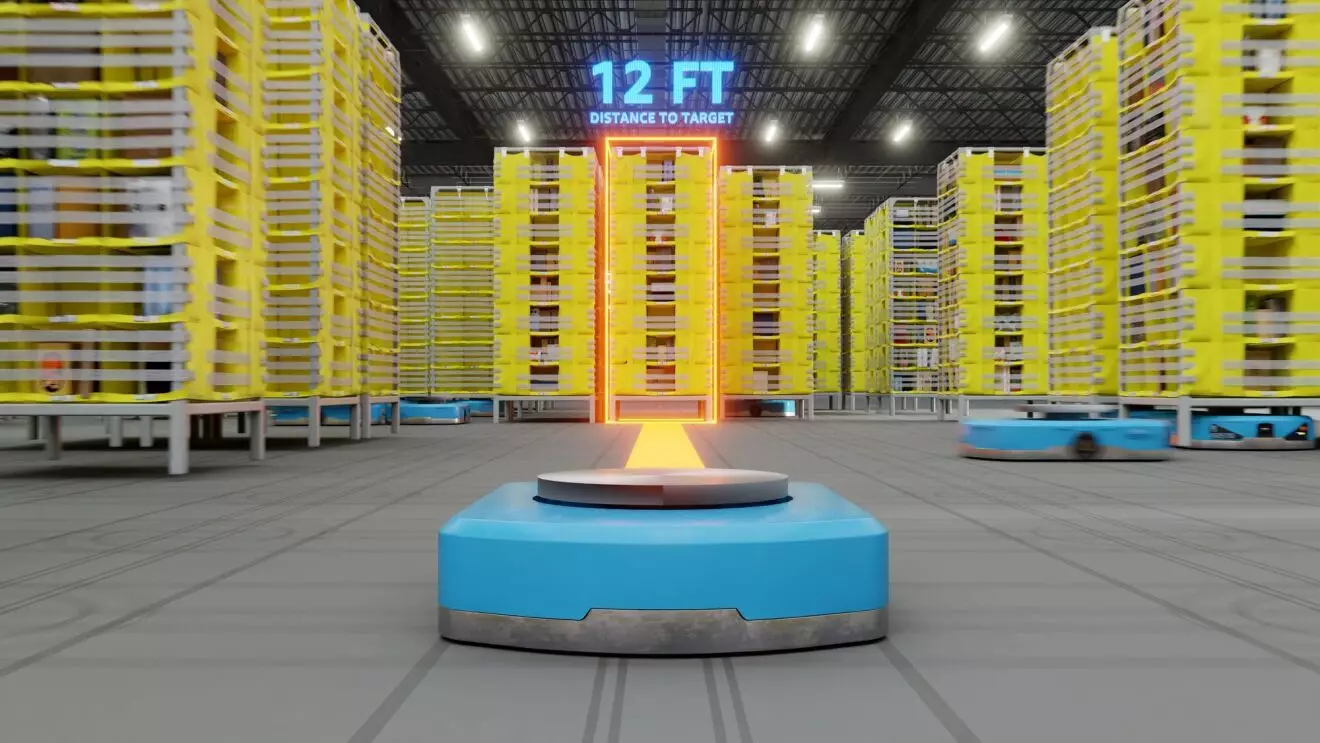Amazon’s deployment of one million robotic units marks a pivotal moment in the landscape of industrial automation. This milestone underscores a strategic shift from human-centric workflows to a technology-driven approach that aims to optimize efficiency on an unprecedented scale. The indication that Amazon might soon have more robots than human employees—despite the company’s still-large workforce—represents a profound transformation in how we conceive of labor and productivity. It’s no longer a matter of if automation will replace certain tasks, but rather how deeply it will redefine the very fabric of warehousing and logistics industries.
From a critical perspective, this development signals an intense drive toward operational perfectionism. With a history spanning over a decade to reach one million bots, Amazon demonstrates a methodical commitment to integrating robotics at every conceivable touchpoint in its fulfillment network. However, such relentless pursuit of efficiency raises questions about sustainability, worker displacement, and ethical considerations. Is this automation a genuine leap toward a better, more innovative future, or is it primarily a quest to minimize costs at human expense?
Intelligent Robotics and AI Synergy
What distinguishes Amazon’s robotic deployment from previous automation efforts is its integration with cutting-edge artificial intelligence. The company’s novel DeepFleet AI model exemplifies how intelligent systems can orchestrate vast fleets of robots, reducing travel times and increasing throughput. Amazon claims these advancements allow for a 10% improvement in fleet coordination, leading to faster deliveries and reduced costs—a win-win scenario on paper.
The introduction of Vulcan, a robot equipped with dual arms, cameras, suction cups, and a sense of touch, exemplifies the aspiration towards creating autonomous machines that can adapt and improve over time. The phrasing used by Amazon—”self-improving over time”—irks some critics, who question whether such language masks an unsettling reliance on machine learning systems capable of unpredictable evolution. Despite claims of AI-driven productivity, the overarching concern remains whether these robots are truly intelligent or simply executing increasingly complex pre-programmed routines.
From my critical vantage point, this technological arms race reflects a global obsession with efficiency, but not without risks. Over-automation could lead to skill erosion among human workers, who might be sidelined from even supervisory roles. Such a scenario raises serious questions about the long-term societal impact—are we surrendering meaningful employment opportunities in exchange for marginal gains?
The Human Cost and Cultural Shift
Contrary to gloomy predictions about mass unemployment, some reports, like those from the Wall Street Journal, paint a somewhat optimistic picture. They suggest that displaced workers are transitioning into supervisory roles, overseeing robotic operations and earning higher wages—up to 2.5 times more than before. While this might sound reassuring, it hinges on the assumption that companies will actively facilitate retraining and upward mobility for their workforce.
The reality is more complex. The shift toward automation often happens unevenly, benefiting a minority while marginalizing others. The typical Amazon warehouse worker, who once performed physically taxing, repetitive tasks, is increasingly being repositioned into oversight roles that require different skill sets. That’s a positive development in theory, but it also emphasizes a growing divide: while some workers evolve into tech-savvy coordinators, many others face job displacement without adequate safety nets or retraining programs.
From a pragmatic standpoint, increased efficiency—shifting from 175 packages per employee annually to over 3,870—is staggering. Yet, this hyper-productivity magnifies concerns about worker dependency on automation and the potential erosion of human skillsets. Moreover, the relentless drive to ship billions of packages annually raises environmental questions. The environmental footprint of maintaining vast robotic fleets, energy consumption, and logistical overhead should not be overlooked in this narrative of progress.
The Ethical and Societal Implications
While technological advancements ostensibly herald a brighter, faster future, they also cast shadows that demand serious contemplation. The deployment of over a million robots and sophisticated AI systems at Amazon exemplifies how corporate interests prioritize efficiency, often at the expense of broader societal considerations.
The human stories embedded within this narrative are telling. Workers like Neisha Cruz highlight a narrative of adaptation, but it’s crucial to interrogate whether such narratives are the norm or exceptions. Are we witnessing a genuine transition that benefits society, or is this merely the automation of labor to satisfy shareholder demands?
The potential for AI to self-improve further complicates this picture. Autonomy plus rapid iteration could lead to unforeseen consequences—machines making decisions that humans cannot fully comprehend or control. This potent combination warrants caution and robust ethical frameworks.
In the end, Amazon’s relentless push into automation symbolizes both the exciting potential of technology and the urgent need for societal reflection. As these robots march forward into every corner of logistics, our challenge is to ensure that progress serves the common good—not just corporate profits.

